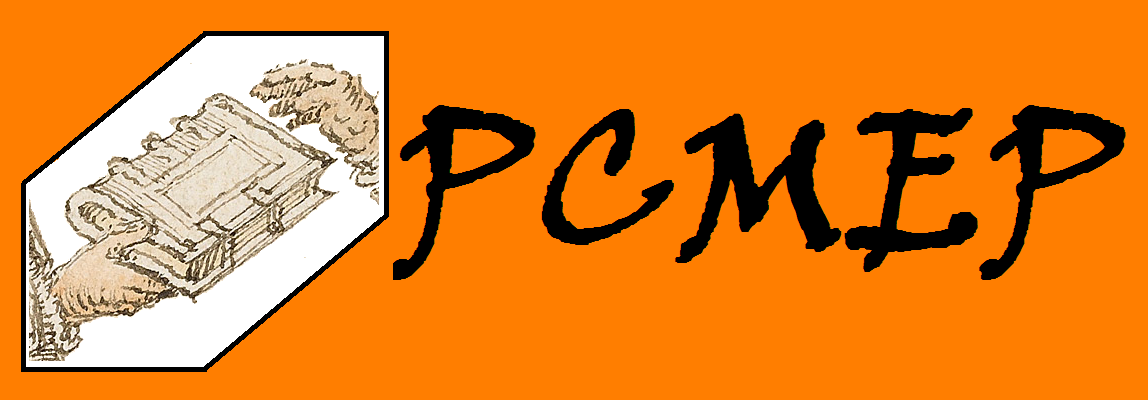The Parsed Corpus of
Middle English Poetry (PCMEP)
PCMEP Text Information
The Bird with Four Feathers
Back to PCMEP texts
About the text:
About the edition and manuscript base:
About the file:
Other:
| Text name: | The Bird with Four Feathers |
| Alternative names: | By a forest side walking as I went; A tretyse of Parce michi domine; Allegory of the bird with four feathers |
| Content: | In a forest, the poet overhears a bird praying to God for mercy. It has lost its four principal feathers: youth, beauty, strength and wealth. Mankind is in need of God's mercy. The poet thanks the bird for the valuable lesson. |
| Genre/subjects: | penitential poem, transitoriness of life, lamentation, monition, chanson d'aventure |
| Dialect of original composition: | East-Midlands The poem is extant in its complete form in four manuscripts. All of them come from the London area. The four manuscripts are: Oxford, Bodleian Library, Bodley 596 (SC 2376), ff. 21v- 24v, Oxford, Bodleian Library Douce 322 (SC 21896), ff. 15r-16v, London, British Library Harley 1706, ff. 16r-17r (a copy of or copied from the same exemplar as Douce 322), and Cambridge, Trinity College R.3.21 (601), ff. 34r-37v. This suggests that the poem also originated in or around London (see Fein 1998: Bibliography). |
| Date of original composition: | 1390-1410 "Its relationship to lyrics in the Vernon series and to the alliterative Four Leaves of the Truelove points to the period 1390-1410, a date allowing sufficient time for several variant texts [...] to crop up in manuscripts of the mid-fifteenth century and later" (Fein 1998: introduction). |
| Suggested date: | 1400 |
| PCMEP period: | 3 (1350-1420) |
| Versification: | twenty stanzas of varying length, eight, twelve, sixteen and twenty lines; alternate rhyme throughout, abab |
| Index of ME Verse: | 561 (IMEV), 561 (NIMEV) |
| Digital Index of ME Verse: | 924 |
| Wells: | 7.42 |
| MEC HyperBibliography: | By a forest |
About the edition and manuscript base:
| Edition: | Brown, Carleton F. 1924. Religious Lyrics of the XIVth Century. Oxford: Clarendon. 208-215. |
| Manuscript used for edition: | Oxford, Bodleian Library, Bodley 596 (SC 2376), ff. 21v-24v |
| Online manuscript description: | Summary catalogue of Western manuscripts in the Bodleian Library at Oxford, no. 2376 |
| Manuscript dialect: | East-Midlands Manuscript Bodley 596 is "from the London area [...] connected with Westminster Abbey" (Fein 1998: introduction) |
| Manuscript date: | s. xv-in The online version of the MED dates the manuscript a1425. "c. 1421-22" (Fein 1998: Bibliography) |
About the file:
| File name: | M3.BirdFoFe |
| ID: | BirdFoFe,x.y.z: x=token, y=page number, z=line |
| Word count: | 1,508 (1,559 with Latin refrain) All stanzas but the last two are concluded by the Latin refrain Parce michi domine ('Spare me, Lord!'). |
| Token count: | 169 |
| Line count: | 241 |
Other:
| General notes: | No. [121] in Brown's 1924 edition. Another version of the poem in eight-line stanzas can be found in London, British Library Harley 2380, ff. 72v-74r (DIMEV 5909). The poem survives in complete form in four manuscripts, but there are also several abbridged and incomplete copies. For a complete list of manuscript witnesses, see the Bibliography in Fein 1998. The poem has a symmetrical structure. Its stanzaic construction has been likened to the shape of a bird: Stanzas 1-7 and 14-20 form two "wings." They have each two subparts, which look like "feathers" (yielding a total of four feathers). The central section (stanzas 8-13) can then be assumed to form the "body" of the bird (Hieatt & Hieatt 1970). |
| Remarks on parses: | The poem includes a first-person narrator and a talking bird talking. The bird's narration, but not the first-person narrator, is tagged as direct speech. The line breaks follow the rhyming scheme and hence the linearization as in the edition. The parses are generally unproblematic. |
References
Brown, Carleton F. 1924. Religious Lyrics of the XIVth Century. Oxford: Clarendon. (available online)
Fein, Susanna G. 1998. Moral Love Songs and Laments. Kalamazoo, Michigan: Medieval Institute Publications. (available online)
Hieatt, Kent & Hieatt, Constance. 1970. '"The Bird with Four Feathers": Numerical Analysis of a Fourteenth-Century Poem.' Papers on Language and Literature 6. 18-38.
